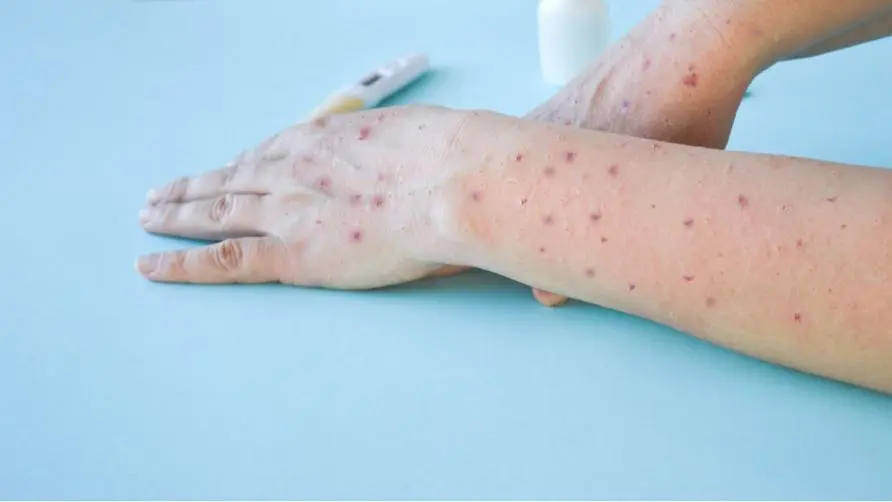The degree of monkeypox mutation "surges 10 times"! Critical care doctors list 3 points to prove: the virus may have "accelerated evolution"

The international monkeypox epidemic continues to rise. Research lists three points that prove the virus has “accelerated evolution”
The monkeypox epidemic continues to rage around the world, and the Taiwan Centers for Disease Control announced Taiwan’s first confirmed case of monkeypox imported from abroad on June 24. As the international monkeypox epidemic heats up, will monkeypox virus become the second wave of pandemic viruses after COVID-19? Dr. Huang Xuan, an expert in critical care medicine, pointed out in a social post that judging from the current situation, the variability of monkeypox has reached an unprecedented peak, which indeed requires more attention from relevant units.
Dr. Huang Xuan explained that the Portuguese National Institute of Health research team published preliminary results in the international journal “Nature Medicine” on June 25. Researchers sequenced 15 monkeypox viruses and reconstructed the genetic data of the virus and found:
Compared with the monkeypox virus strains from 4 years ago (2018-2019), the monkeypox virus strains in this study have as many as “50 genetic variations.”
Research points out that the mutations found in this batch of viruses can be said to be “exceeding expectations” and are 10 times more than before.
These obvious genetic changes show that the monkeypox virus has “accelerated evolution.”
Scientists believe that the experimental results are the result of the “leap evolution” of the monkeypox virus strain, because the poxvirus family (poxvirus) originally has a low mutation rate, with an average of only one mutation per year; and the monkeypox that caused the pandemic this year The virus mutates almost once a month on average, causing nearly 10 times as many mutations, which may indeed be a warning that monkeypox will cause a pandemic.
Could monkeypox virus weaken the human immune system? Intensivist reveals three stages of monkeypox infection
Dr. Huang Xuan further cited research by Pam Vallely, a professor of virology at the University of Manchester in the UK, who pointed out that most mutations in the monkeypox virus may weaken the human defense mechanism called “APOBEC3”. APOBEC3G can directly act on viral genes to block viral nucleic acid synthesis. Therefore, they have a clear resistance to different viral infections and are one of the beneficial tools for the human immune system to fight against viruses.
Dr. Huang Xuan said that monkeypox and smallpox belong to the same virus family, but the severity is relatively mild. In the past, global public health believed that the contagiousness of monkeypox was extremely low. Nowadays, the monkeypox virus is spreading rapidly and at an alarming rate. The public and relevant units should be more vigilant. Dr. Huang Xuan listed the course of disease after infection with monkeypox as follows:
Initial symptoms: Fever begins. These include fever, headache, swelling, back pain, muscle aches and general weakness.
After fever: After fever begins, a rash begins, often starting on the face and then spreading to other parts of the body, most commonly on the palms and soles of the feet.
After the rash: The rash may make the body itchy and may change in different ways before the scabs eventually fall off. The skin breakdown may cause scarring, and the infection will last 14 to 21 days and will usually go away on its own.
Dr. Huang Xuan explained that monkeypox epidemics have been limited to the African continent in the past, but this large-scale spread is the first time that monkeypox has appeared in large numbers and rapidly infected outside Central and West Africa. In addition, according to WHO data, 84% of the monkeypox currently prevalent globally comes from the European continent; while the African continent, where it originated, only accounts for 3% of confirmed cases. Monkeypox is also more common in the continental United States (12%) than in Africa.
The Taiwan Ministry of Health and Welfare, Centers for Disease Control calls on people to avoid contact with suspected cases of monkeypox when going abroad in order to reduce the risk of monkeypox virus infection; if you have fever and skin lesions such as rashes and papules when returning to the country, If you have suspected symptoms such as blister or pustule, you should proactively inform airline personnel and airport and port quarantine personnel, seek medical treatment as soon as possible, and inform the doctor of your travel and contact history to avoid further expansion of the epidemic and the spread of the virus to relatives, friends, or people living with you.
Source:
“Monkeypox Virus is Coming with Menace” - Dr. Huang Xuan
“Cause of monkeypox: Rapid mutations of a large number of genes? - Dr. Huang Xuan
Multi-country monkeypox outbreak: situation update
Multi-country outbreak of monkeypox virus: phylogenomic characterization and signs of microevolution
Further reading:





